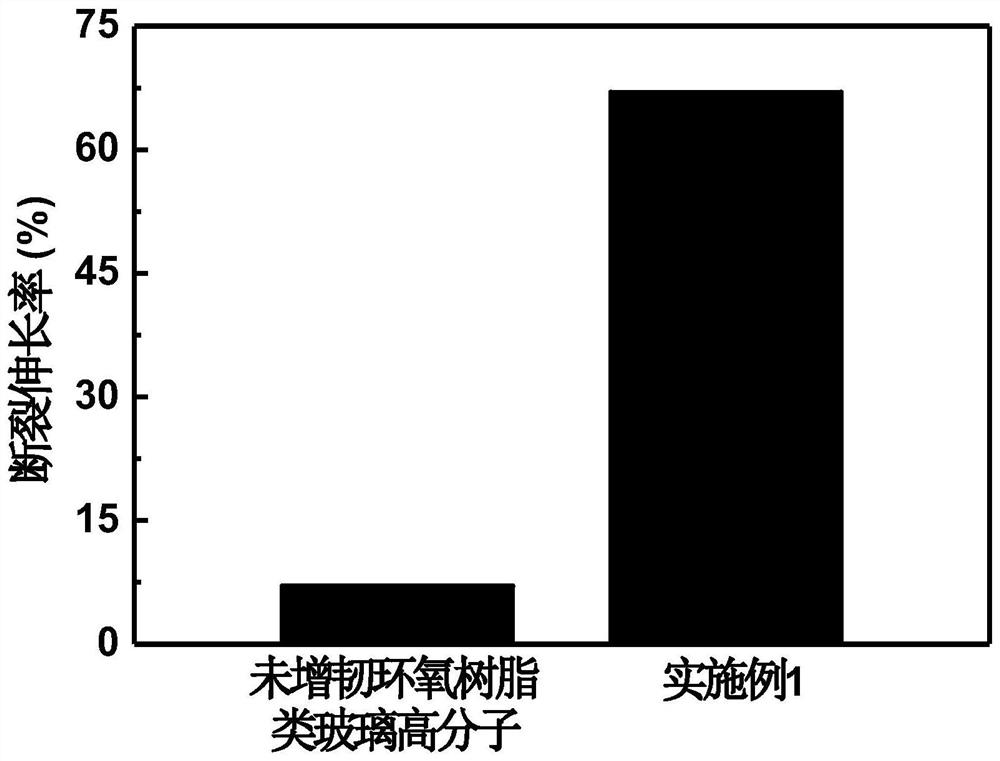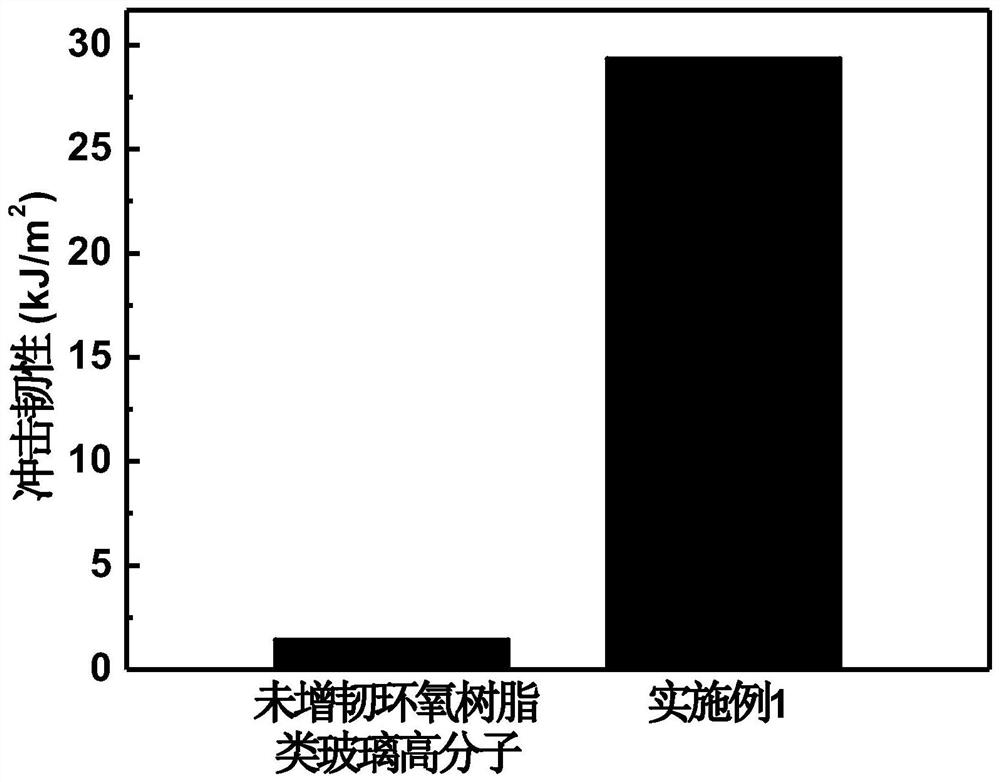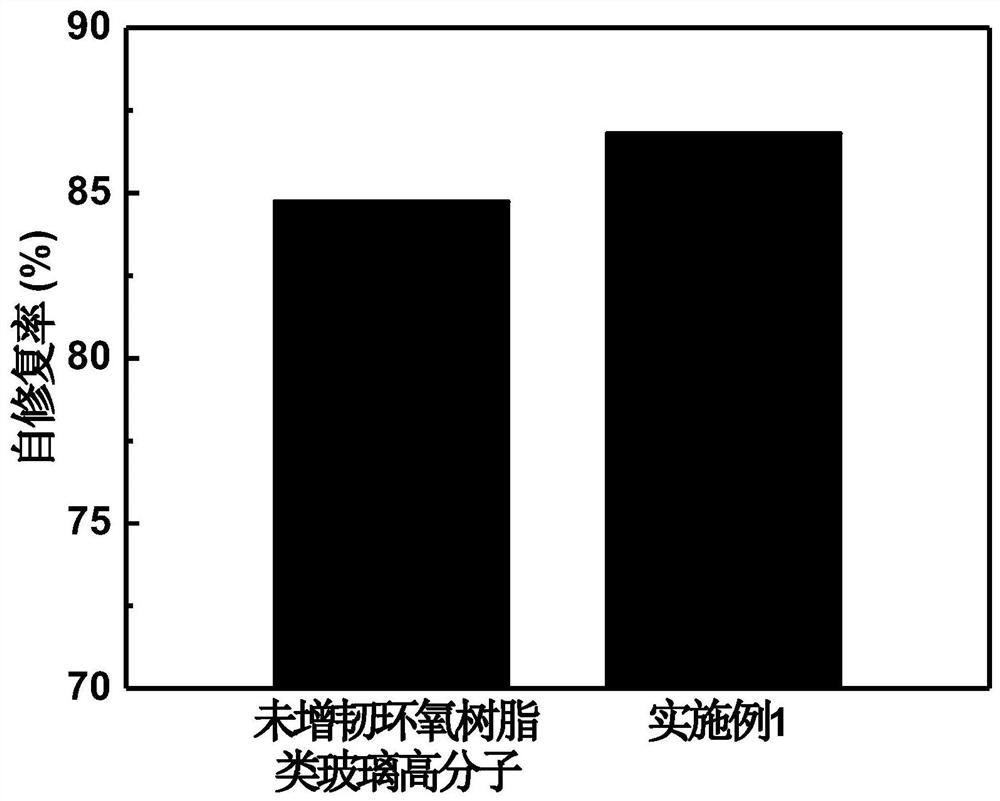A kind of super-tough self-healing epoxy resin glass polymer material and preparation method thereof
A polymer material and epoxy resin technology, applied in the field of thermosetting materials, can solve the problems of high brittleness, difficult to recycle, and catalyst type glass-like polymer is not environmentally friendly, and achieves a controllable degree, good compatibility, and good self-healing. The effect of efficiency
- Summary
- Abstract
- Description
- Claims
- Application Information
AI Technical Summary
Problems solved by technology
Method used
Image
Examples
Embodiment 1
[0040] A method for toughening catalyst-free epoxy resin glass polymers by using polysebacic anhydride and improving comprehensive properties such as elongation at break, impact toughness, self-repair efficiency and thermal stability, the specific steps are as follows:
[0041] 1. Preparation of Catalyst-free Super Tough Epoxy Glass Polymer
[0042] 1) Preheat 40g of epoxy resin at 120°C for 10min;
[0043] 2) Add 23.3g of glutaric anhydride and 14.1g of terephthalic acid to the epoxy resin until it is completely dissolved, then vacuumize and remove air bubbles, stir and mix evenly;
[0044] 3) 4g (in this embodiment, the content of polysebacic anhydride accounts for 10% of the mass ratio of epoxy resin) polysebacic anhydride is added to the system until it is uniformly mixed;
[0045] 4) Casting the mixture, curing at a curing temperature of 130° C. to 220° C. for 10 hours to obtain a catalyst-free super-tough self-healing epoxy resin glass polymer material.
[0046] A 5967...
Embodiment 2
[0049] A method for toughening catalyst-free epoxy resin glass polymers by using polysebacic anhydride and improving comprehensive properties such as elongation at break, impact toughness, self-repair efficiency and thermal stability, the specific steps are as follows:
[0050] 1. Preparation of Catalyst-free Super Tough Epoxy Glass Polymer
[0051] 1) Preheat 40g of epoxy resin at 120°C for 10min;
[0052] 2) Add 23.3g of glutaric anhydride and 14.1g of terephthalic acid to the epoxy resin until it is completely dissolved, then vacuumize and remove air bubbles, stir and mix evenly;
[0053] 3) 10g (in this embodiment, the content of polysebacic anhydride accounts for 25% of the mass ratio of epoxy resin) polysebacic anhydride is added to the system until it is uniformly mixed;
[0054] 4) Casting the mixture, and curing it at a curing temperature of 130° C. to 220° C. for 10 hours to obtain a catalyst-free super-tough epoxy resin glass polymer material.
[0055] A 5967 Inst...
PUM
| Property | Measurement | Unit |
|---|---|---|
| elongation at break | aaaaa | aaaaa |
| elongation at break | aaaaa | aaaaa |
| elongation at break | aaaaa | aaaaa |
Abstract
Description
Claims
Application Information
 Login to View More
Login to View More - R&D
- Intellectual Property
- Life Sciences
- Materials
- Tech Scout
- Unparalleled Data Quality
- Higher Quality Content
- 60% Fewer Hallucinations
Browse by: Latest US Patents, China's latest patents, Technical Efficacy Thesaurus, Application Domain, Technology Topic, Popular Technical Reports.
© 2025 PatSnap. All rights reserved.Legal|Privacy policy|Modern Slavery Act Transparency Statement|Sitemap|About US| Contact US: help@patsnap.com



